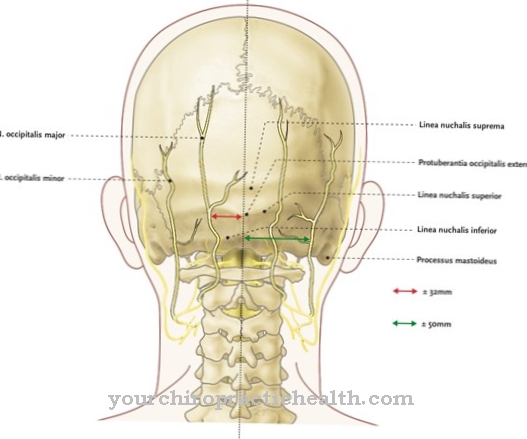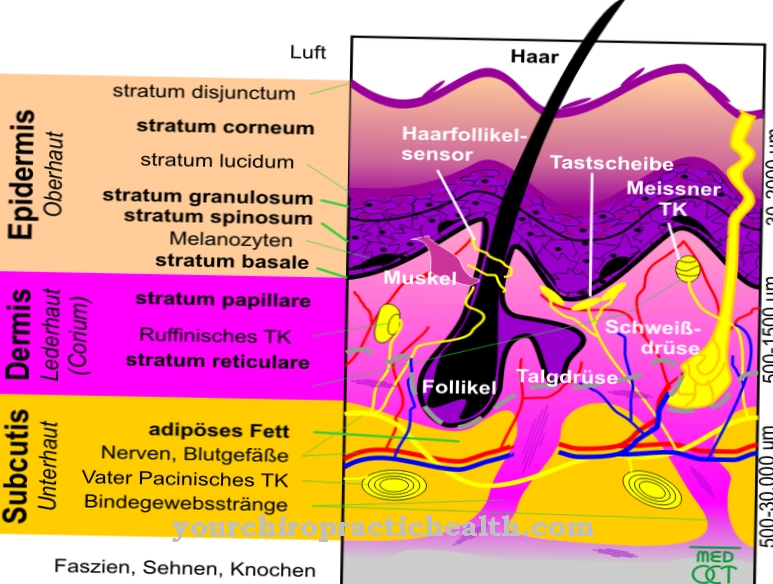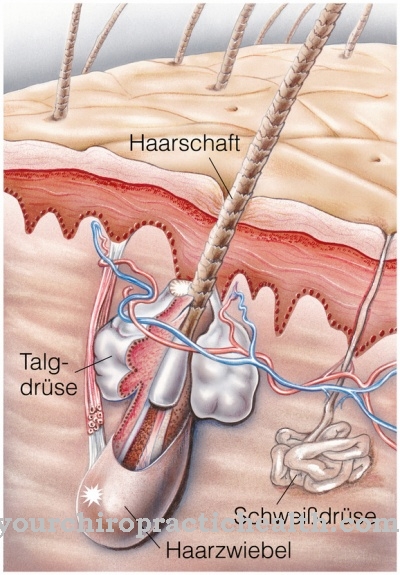Chromatin is the material from which the chromosomes are composed. It is a complex of DNA and surrounding proteins that can compress the genetic material. Disturbances in the chromatin structure can lead to serious illnesses.
What is chromatin?
Chromatin is a mixture of DNA, histones, and other proteins bound to DNA. A DNA-protein complex is formed from this, the main components of which, however, are DNA and histones. The name chromatin results from the discolourability of this complex with basic nuclear dyes. All eukaryotes contain chromatin.
In prokaryotes, the DNA molecules are mainly free and form a ring structure. In the higher eukaryotic creatures, chromatin is the basis of the chromosomes. The DNA-protein complex can compress so much that a lot of genetic information can be stored in a small space in the cell nucleus. Histones are very old protein molecules whose genetic composition and structure have remained almost unchanged from eukaryotic unicellular organisms to humans.
Anatomy & structure
As already mentioned, chromatin is composed of DNA, histones and other proteins. As part of this complex, the DNA molecule is wrapped around a histone packet made up of eight histones. Histones are proteins that consist of many basic amino acids.
The amino groups generate a positive charge, while the DNA molecules have a negative external charge. This is the basic requirement for the formation of a solid complex from DNA and histones. The so-called histone octamer (8 histones) is wrapped around 1.65 times by the DNA double strand. Da corresponds to a chain length of 146 base pairs. As a result, the DNA can be shrunk 10,000 to 50,000 times. This is necessary so that it fits into the cell nucleus. A unit of a wrapped histone octamer is also known as a nucleosome. The individual nucleosomes are in turn connected to one another via linker histones. In this way a chain of nucleosomes is formed, which as a 30 nm fiber represent a higher organizational unit of the DNA.
Even within the tight packing, the DNA can still be reached by regulatory protein molecules that allow the genetic information to be read and transferred to proteins. However, a distinction still has to be made between euchromatin and heterochromatin. With Euchromatin, the DNA is active. Almost all active genes that encode and express proteins are located here. There are no structural differences in the area of the Euchromatin, regardless of the condensation state of the respective chromosome. Heterochromatin contains inactive or less active DNA-protein complexes.
It is responsible for the structural properties of the total chromatin. Heterochromatin, in turn, can be divided into two forms. So there is constitutive and facultative heterochromatin. Constitutive heterochromatin is never expressed. It has only structural functions. The optional heterochromatin can sometimes be expressed. In the different phases of mitosis and meiosis, different packing levels of chromatin emerge. The so-called interphase chromatin shows a very strong loosening up compared to the metaphase chromatin, since most proteins are expressed in this state.
Function & tasks
The function of chromatin is to accommodate the genetic information in the very small space of the cell nucleus. This is only possible through the formation of a very tightly packed DNA-protein complex. However, it is necessary that there are different levels of condensation. While the complex is very tightly packed in a quiet and inactive phase, it has to be more relaxed in more active phases. But even here the pack is still very tight.
To activate protein synthesis, the strong bond between the corresponding DNA segments and the wrapped histone must be broken. The bound histones block the DNA from expressing proteins. Different binding states can also generate different activities of the genes. The cells differentiate in the course of epigenetic processes. The genetic information of the DNA is the same in the different body cells, but the activities during gene expression are different, so that the different cell types also take on different tasks.
Diseases
Errors in the structure of chromatin can lead to serious diseases. These errors can result in shifts in gene activity, which disturb the harmony in the interaction of the body's cells. These are often very rare diseases with very similar symptoms.
The affected people suffer from physical malformations and mental disabilities. The mechanisms that cause these symptoms are still too little known. However, research into these relationships is necessary in order to be able to treat these diseases in the best possible way. Two typical diseases that are based on chromatin disorders are the Coffin-Siris syndrome and the Nicolaides-Baraitser syndrome. Both diseases are genetic. In Coffin-Siris syndrome, congenital hypoplasia of the finger and toe bones, short stature and mental retardation occur. There are various mutations that trigger this disease, which are responsible for certain subunits of the DNA-protein complex.
There are both autosomal recessive and autosomal dominant inheritance patterns. The treatment is symptomatic and depends on the specific symptoms of the disease. Nicolaides-Baraitser syndrome also has similar symptoms. In addition to short stature and malformation of the fingers, severe mental retardation and seizures also occur here. Inheritance is autosomal dominant. The condition is very rare, affecting one in a million people. Another rare hereditary condition associated with chromatin disorder is Cornelia de Lange syndrome. This syndrome also shows many physical malformations and mental development disorders.



























